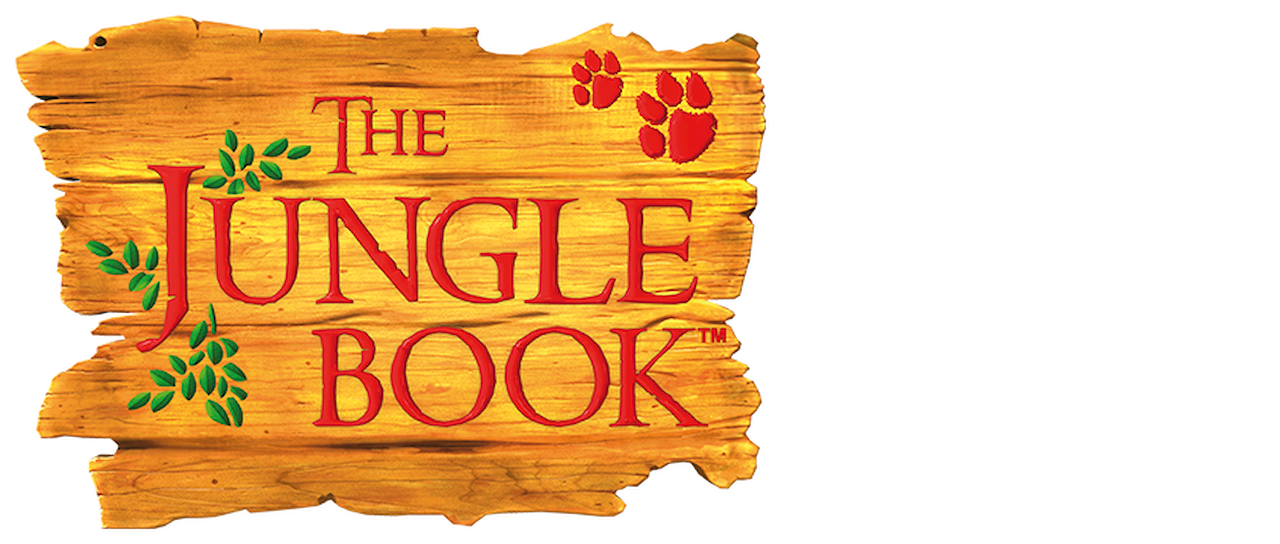
When he fashions tools from vines and wood, Bagheera reprimands him not-as in Kipling’s text-because such “tricks” are unbeastlike but because they are specifically unwolflike. Like any “noble savage,” he holds intuitive knowledge of the Eden through which he moves. Mowgli’s human nature is good and pure it is civilization that would corrupt him. The tropical forest spreads over the land like a single varicolored organism, each animal species, including homo sapiens, playing a vital role. In the live-action Jungle Book (and elsewhere-Angelina Jolie’s Maleficent quoted Rousseau), the Disney philosophy of nature and humankind’s place in it is deeply Romantic.
#Jungle book font bagheera movie
If the movie turns animals into hippies, it also rewrites the book’s harsh and domineering vision of man. Good and evil, in Kipling, entwine like creepers on a banyan tree. Similarly, Scarlett Johansson’s sultry Kaa is a villain in the film, but in the stories he (he!) is a dangerous friend, a hypnotic epicure with a sadistic streak who teams up with Baloo and Bagheera to rescue Mowgli from the monkeys. As the pack senses old Akela’s weakness, they begin to turn on Mowgli as well-the man-cub must fend them off with a burning branch and run away to a human encampment. But in Kipling’s Jungle Book, it is customary for the young wolves to kill their alpha when his powers have waned. In the movie, Khan murders the lupine leader Akela because his pack tried to protect Mowgli. The ecosystem is at once legalistic (“By the law of the Jungle he has no right,” Father Wolf says of Shere Khan, borrowing John Locke’s language) and alluringly savage, its shifting alliances barely outpacing a fundamental darkness. But Kipling divides his jungle into rival “peoples”-the Jackal People, the Wolf People, the Snake People-all jockeying for advantage. Predator and prey suspend their enmity in times of drought so that everyone can lap at the single remaining pool of water. In Disney, the jungle is collaborative and interdependent. These lovely values lie pretty far afield from Kipling’s brutal magnificence. Meanwhile, the original Jungle Book ends with its hero looking for a home, “the jungle shut to me and the village gates shut … my heart is heavy with the things that I do not understand.” The film leaves him reclining happily on a branch with Bagheera and Baloo. Having defeated Khan, Mowgli reintegrates seamlessly into the animal kingdom. “The strength of the pack is the wolf, and the strength of the wolf is the pack,” the furred and feathered creatures of the jungle chant, the wrath of Khan proving no match for their harmonious teamwork.

(For his part, King Louie has renounced jive-talk and turned into Christopher Walken.) Mowgli, no longer Kipling’s lonely outcast, ends up uniting the jungle against a tyrant, the silky-voiced Shere Khan, a tiger who reveals his villainy by killing for sport and pitting the beasts against each other. Befitting his career as an expert shaper of familiar material, he’s thoroughly domesticated the tale, creating a sweet, funny film in which peace and goodness defeat violence and cruelty, and characters succeed not by destroying others but by becoming fully themselves.

But as far as pure and explicit racism goes, Kipling’s novel scores lower than Disney’s 1967 movie, which introduced a great ape called King Louie (after Louie Armstrong) who sang minstrel songs about his desire to get civilized.Įnter Jon Favreau. You might furrow your brow at the way the Indian villagers succumb to supernatural babble and suspicion. You might wince at the subtext of these characters’ dominance-for Kipling, whites were born rulers as surely as tigers were born predators-or point out the author’s lack of pity for the weak. He loved the panther Bagheera with his liquid menace (“his jaws shut with a snap, for he did not believe in being humble”), the terrifying python Kaa, and most of all Mowgli, who commands fire and possesses a gaze the beasts cannot meet without flinching. Might makes right mesmerized Kipling the more ruthless the subjugation, the better. Well, Kipling was certainly a racist fuck-look no further than his novel Kim for a portrait of brave British spies and slavish, dark-skinned Buddhists-but The Jungle Book, which Kipling wrote out of a Vermont cabin in 1894, doesn’t showcase his bigotry so much as his uncritical reverence for power.


 0 kommentar(er)
0 kommentar(er)
